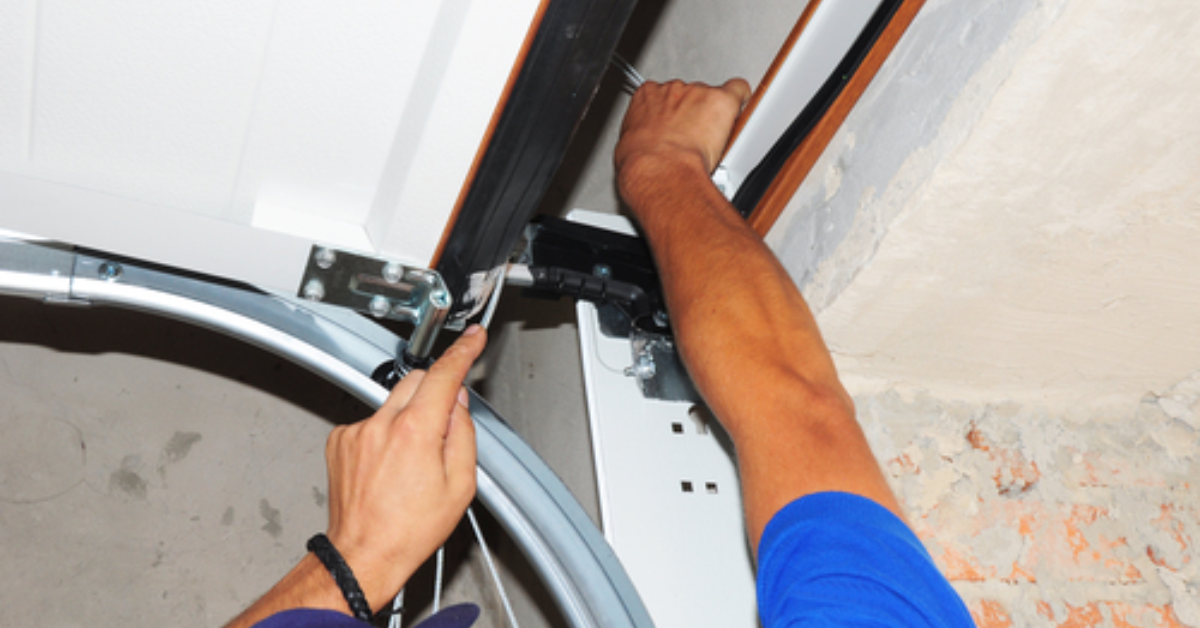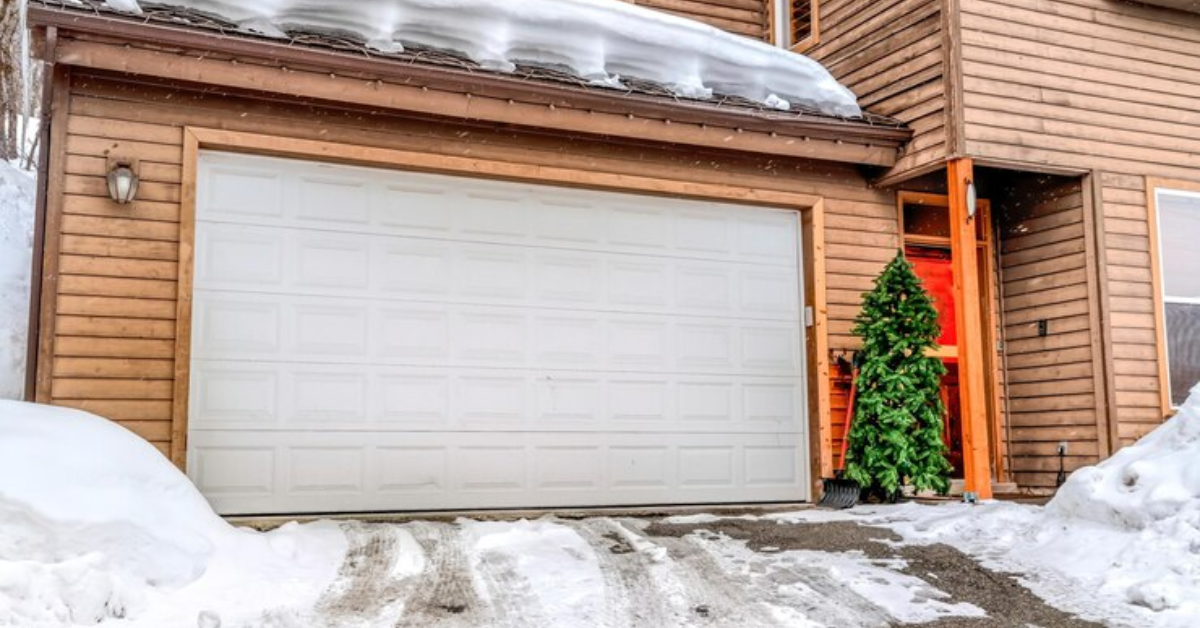How Do You Repair Garage Door Opener Cables
Garage door opener cables play a crucial role in the smooth operation of your garage door system. These cables, often made of durable steel, work in tandem with other components to lift and lower the door safely and efficiently. Understanding the function and structure of these cables is essential for homeowners looking to maintain their garage doors and address any issues that may arise.
The proper functioning of garage door opener cables is vital for the overall
safety and performance of your garage door system. These cables bear the weight of the door as it opens and closes, ensuring smooth movement and preventing the door from becoming misaligned or stuck. Also, well-maintained cables contribute to the longevity of your garage door and minimize the risk of accidents or injuries caused by malfunctioning components. In this guide, we will delve into the intricacies of garage door opener cables and explore how to effectively repair them to ensure the continued functionality of your garage door system.
Signs of Damaged Garage Door Opener Cables
Garage door opener cables are subjected to significant stress and wear during the operation of your garage door. Over time, these cables may begin to exhibit signs of damage or wear, indicating the need for repair or replacement. Here are some common symptoms to watch out for:
Frayed or Worn Cables: One of the most obvious signs of damage is fraying or wearing of the cables. This can occur due to repeated use, exposure to harsh weather conditions, or inadequate lubrication. Inspect the cables regularly for any signs of fraying or thinning.
Slack or Loose Cables: If the cables have become slack or loose, it could indicate that they are no longer able to support the weight of the garage door properly. This can result in uneven movement of the door or difficulty in opening and closing it smoothly.
Noisy Operation: Damaged cables may cause the
garage door to operate noisily, producing squeaking, grinding, or scraping sounds during opening or closing. These noises can be a result of the cables rubbing against other components or becoming misaligned.
Visible Damage: Inspect the cables visually for any signs of visible damage, such as bends, kinks, or twists. These can weaken the structural integrity of the cables and compromise their ability to function properly.
Uneven Movement of the Door: If one side of the garage door moves faster or slower than the other, it could indicate an issue with the cables. Uneven movement may result from one cable being more damaged or worn than the other, causing imbalances in the door's operation.
Risks Associated with Faulty Cables
Faulty garage door opener cables pose several risks to the safety and functionality of your garage door system. Ignoring signs of damage or neglecting to repair faulty cables can lead to the following risks:
- Damaged cables are prone to sudden failure, which can result in the garage door becoming stuck in an open or closed position. This can pose a security risk, leaving your home vulnerable to intruders, or prevent you from accessing your vehicle or belongings stored in the garage.
- When garage door opener cables are not functioning properly, it puts additional stress on other components of the door system, such as the springs, tracks, and rollers. This can accelerate wear and tear on these parts, leading to further damage and costly repairs.
- Faulty cables can create safety hazards for you and your family. A garage door that suddenly falls due to cable failure can cause serious injuries or damage to property. Additionally, the unpredictable behavior of a malfunctioning garage door poses a risk of accidents or entrapment, especially for children or pets.
- Neglecting to address damaged cables in a timely manner can result in more extensive damage to the garage door system, leading to costly repairs or even the need for replacement. By promptly repairing or replacing faulty cables, you can prevent further damage and save money in the long run.
Overall, being aware of the signs of damaged garage door opener cables and understanding the risks associated with faulty cables is essential for maintaining the safety and functionality of your garage door system. If you notice any signs of damage or wear, it is important to address them promptly to prevent further complications and ensure the continued operation of your garage door.
Tools and Materials Needed for Repair
Garage door opener cable repair requires specific tools and materials to ensure a safe and effective outcome. Before starting the repair process, gather the following essential tools:
- Adjustable wrench
- Pliers
- Screwdrivers (flathead and Phillips)
- Hammer
- Vice grips
- Cable cutter
- Level
- Power drill with screwdriver bits
- Safety glasses
- Gloves
Required Materials for Cable Repair
In addition to tools, you'll need the following materials for repairing garage door opener cables:
- Replacement cables (ensure they match the size and specifications of your current cables)
- Lubricant or garage door lubrication spray
- Safety cables (optional but recommended for added safety)
- Cable brackets or fasteners (if any are damaged or missing)
- Safety tag or lockout kit (for safety during repairs)
Step-by-Step Repair Process
Repairing garage door opener cables requires careful attention to detail and adherence to safety precautions. Follow these steps for a successful repair:
Safety Precautions Before Beginning
- Disconnect the power to the garage door opener to prevent accidental activation.
- Place blocks or wedges under the garage door to prevent it from closing unexpectedly.
- Wear safety glasses and gloves to protect yourself from potential injury.
Detaching the Garage Door from the Opener
- Locate the emergency release cord on the garage door opener track.
- Pull the emergency release cord to disengage the opener from the door.
- Manually lift the garage door until it is fully open and secure it in place.
Inspecting and Assessing Cable Damage
- Carefully examine the garage door cables for any signs of wear, fraying, or damage.
- Check the alignment of the cables and ensure they are properly seated in the cable drums and pulleys.
- Use a flashlight if needed to inspect the cables in low-light areas.
Removing the Damaged Cable
- Use pliers to loosen and remove the cable brackets or fasteners securing the damaged cable.
- Detach the cable from the cable drum and pulley by unwinding it carefully.
- Dispose of the damaged cable properly to prevent accidents.
Installing the New Cable
- Thread the new cable through the cable drum and pulley, following the same path as the old cable.
- Secure the cable in place with the appropriate brackets or fasteners.
- Ensure the cable is properly tensioned to prevent slack but not overly tight.
Reattaching the Garage Door to the Opener
- Manually lower the garage door until it is resting on the ground.
- Reengage the garage door opener by pulling the emergency release cord back into position.
- Test the garage door opener to ensure proper operation before reconnecting the power.
Follow these step-by-step instructions and use the necessary tools and materials to repair garage door opener cables and restore garage door functionality. Remember to prioritize safety throughout the repair process to prevent accidents and injuries.
Tips for Safe and Effective Repairs
When undertaking repairs on garage door opener cables, it's paramount to prioritize safety at every step of the process. Throughout the repair process, it's crucial to adhere to strict safety guidelines to minimize the risk of accidents or injuries. This includes disconnecting power to the garage door opener before commencing any repair work, using appropriate safety gear such as safety glasses and gloves to protect against potential hazards, and ensuring the work area is clear of children and pets to prevent accidents. Additionally, it's advisable to avoid working alone, especially when dealing with heavy garage door components, and to follow manufacturer instructions and recommended procedures for repair to ensure safe and effective results.
Common Mistakes to Avoid During Repair
Common mistakes during garage door opener cable repairs can lead to further damage or safety hazards. It's essential to be aware of these pitfalls and take precautions to avoid them. Some common mistakes to avoid include attempting repairs while the garage door is in motion or partially open, using damaged or worn-out tools which may compromise safety and accuracy, and attempting to adjust or repair other components of the garage door opener without the necessary expertise. Over-tightening cables should also be avoided, as this can lead to excessive stress and potential failure.
Ensuring Proper Cable Tension and Alignment
Ensuring proper cable tension and alignment is crucial for the optimal functioning of garage door opener cables. Using a level to ensure the garage door is properly aligned before and after cable repair is recommended. Regularly checking cable tension and adjusting as needed to maintain optimal performance is also essential. Properly seating cables in cable drums and pulleys to prevent slippage or misalignment is key, as is lubricating cables and moving parts regularly to reduce friction and wear.
The Best Time to Seek Professional Help
Knowing when to seek professional help is essential for situations where DIY repairs may not be sufficient or safe. Instances requiring professional assistance include severe cable damage or fraying that poses a safety risk, problems with garage door tracks, springs, or other major components, and lack of experience or confidence in performing DIY repairs.
When seeking professional help, it's important to research local garage door repair companies, verify their credentials, and request estimates before making a decision. Choosing a qualified garage door repair service with a reputation for quality workmanship and customer satisfaction ensures peace of mind and reliable repairs.
Maintenance Tips to Prevent Future Issues
Regular inspection and lubrication are essential maintenance practices to prevent future issues with garage door opener cables. Conduct visual inspections of the cables, pulleys, and other components regularly to check for signs of wear, fraying, or misalignment. Additionally, lubricate moving parts such as rollers, hinges, and springs with a recommended garage door lubricant to ensure smooth operation and prolong the lifespan of the components.
Addressing minor cable wear and tear promptly can help prevent more significant issues from arising. If you notice any signs of cable damage, such as fraying or corrosion, address them promptly by replacing the affected cables. Ignoring minor issues can lead to more extensive damage and potentially compromise the safety and functionality of your garage door opener system.
Final Thoughts
Contemporary garage doors offer homeowners an opportunity to embrace modernity, enhancing the functionality, aesthetics, and value of their homes. Throughout this guide, we've discussed key considerations when choosing a contemporary garage door, including budget, compatibility with architectural style, and the importance of professional installation. By prioritizing these factors and exploring the diverse range of customization options available, homeowners can find a garage door that not only meets their practical needs but also reflects their personal style, enhancing the overall appeal of their property. In embracing contemporary garage doors, homeowners can enjoy the advantages of modern design, advanced technology, and sustainable practices, while adding a touch of sophistication to their homes.




